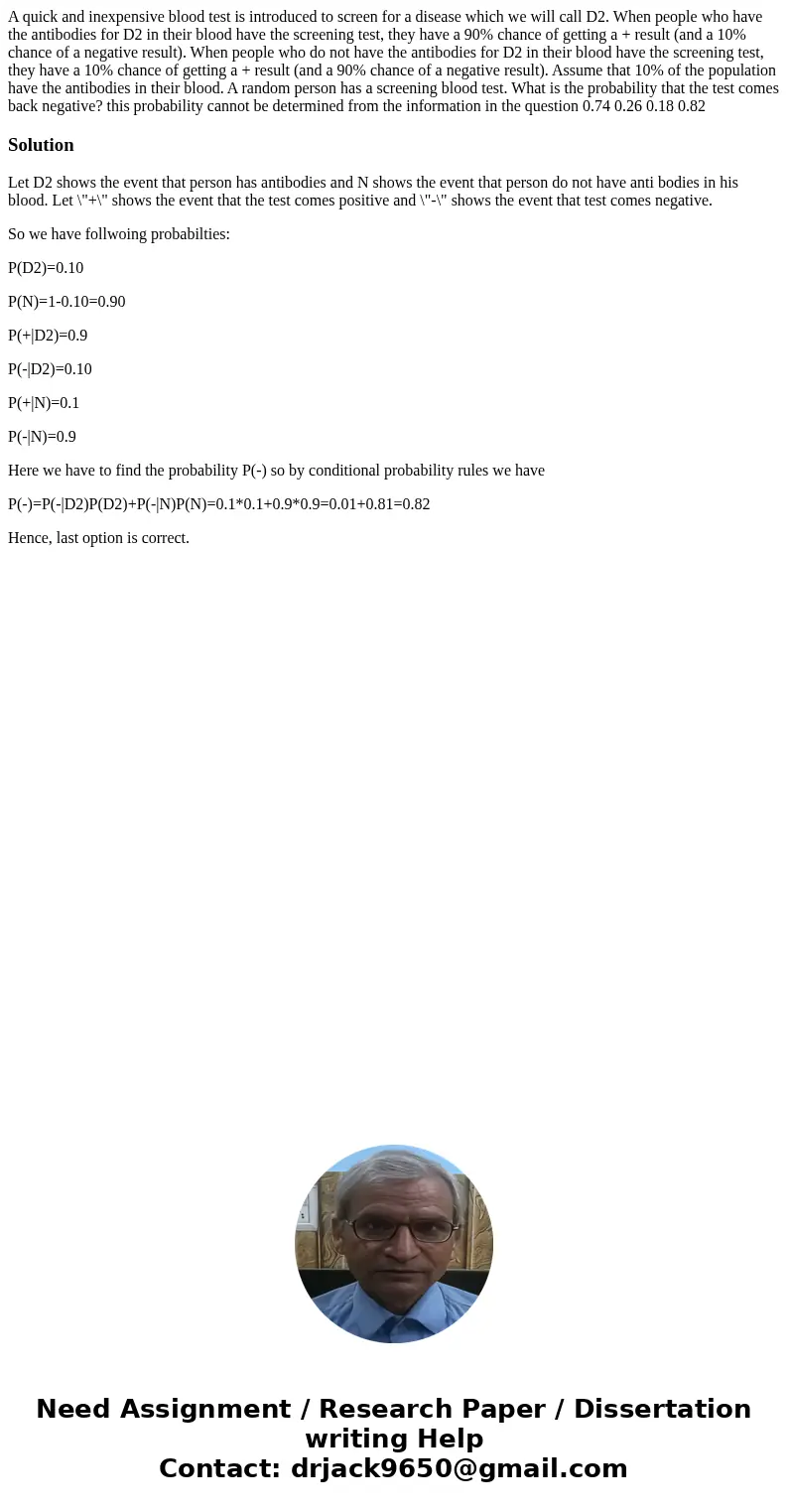A quick and inexpensive blood test is introduced to screen f
A quick and inexpensive blood test is introduced to screen for a disease which we will call D2. When people who have the antibodies for D2 in their blood have the screening test, they have a 90% chance of getting a + result (and a 10% chance of a negative result). When people who do not have the antibodies for D2 in their blood have the screening test, they have a 10% chance of getting a + result (and a 90% chance of a negative result). Assume that 10% of the population have the antibodies in their blood. A random person has a screening blood test. What is the probability that the test comes back negative? this probability cannot be determined from the information in the question 0.74 0.26 0.18 0.82 
Solution
Let D2 shows the event that person has antibodies and N shows the event that person do not have anti bodies in his blood. Let \"+\" shows the event that the test comes positive and \"-\" shows the event that test comes negative.
So we have follwoing probabilties:
P(D2)=0.10
P(N)=1-0.10=0.90
P(+|D2)=0.9
P(-|D2)=0.10
P(+|N)=0.1
P(-|N)=0.9
Here we have to find the probability P(-) so by conditional probability rules we have
P(-)=P(-|D2)P(D2)+P(-|N)P(N)=0.1*0.1+0.9*0.9=0.01+0.81=0.82
Hence, last option is correct.

 Homework Sourse
Homework Sourse